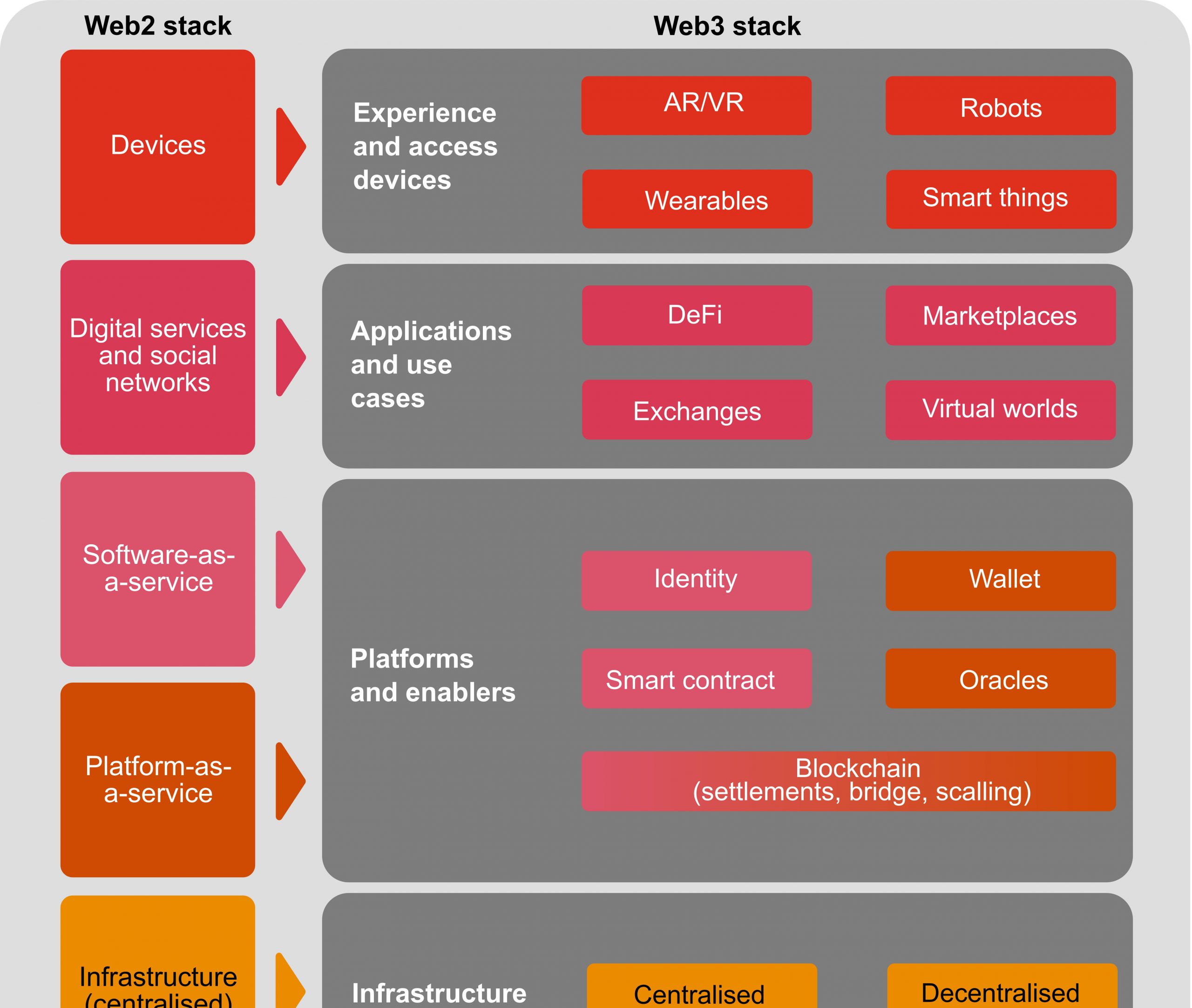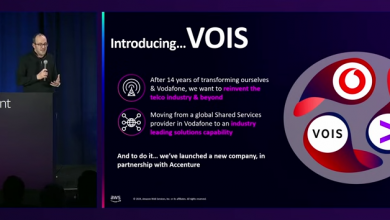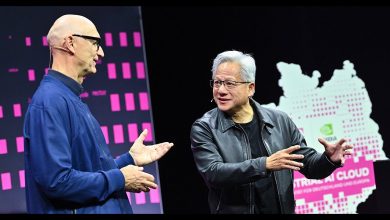Web3 – The Telco Opportunity: The Dawn of a Decentralized Telco Revolution
For telecommunications companies, long the gatekeepers of global connectivity, Web3 represents both an unprecedented challenge and a monumental opportunity.
Telecom companies are facing significant challenges and opportunities in the Web3 era.
In a recent article by McKinsey, José María Álvarez-Pallete López, the CEO of Telefonica, shares his insights on the future of telecom in this rapidly evolving digital landscape.
Despite the challenges, Álvarez-Pallete López sees several opportunities for telecom companies in the Web3 era.
One of the key opportunities is the potential for revenue growth through new business models and partnerships. Telecom companies can leverage their infrastructure and expertise to offer innovative services and solutions to industries such as healthcare, transportation, and smart cities.
The Web3 Future
Web 3 represents the next evolution of the Internet, fusing the Blockchain with a virtual reality Metaverse, creating a more intelligent and interconnected web experience. It utilizes blockchain and decentralized technologies to remove intermediaries, enhance security, and enable peer-to-peer commerce, giving rise to a virtual reality space where users can interact with each other and digital assets in a shared environment.
Imagine a gaming world where every loot drop, every virtual storefront, and every hard-earned victory carries real-world weight, thanks to the fusion of 5G’s relentless connectivity and blockchain’s unshakeable trust. This isn’t merely an evolution of networks—it’s a leap into a hyperconnected era where telcos can transcend their traditional roles as infrastructure providers to become architects of digital ecosystems.
Imagine a world where telecom networks are no longer centralized monoliths but vibrant, community-driven ecosystems powered by blockchain. Picture a future where users own their data, monetize their bandwidth, and seamlessly access services across borders without intermediaries.
The Web3 Telco Opportunity
This is not science fiction—it’s the promise of Web3, and telcos are uniquely positioned to lead this charge. From enabling decentralized connectivity marketplaces to integrating digital identities and powering IoT ecosystems, the opportunities for telcos in Web3 are as vast as they are exhilarating.
Telcos have the potential to be at the heart of the Web 3.0 revolution by leveraging their infrastructure, collaborating with startups, and exploring new monetization opportunities. By embracing the principles of Web 3.0 and actively participating in its development, telcos can shape the future of the internet and unlock new possibilities for themselves and their customers.
In this presentation Moflix Group Chairman of the Board Marc Degen speaks on “The Future of Telecom in Web3”. It focuses on machine-readable data, artificial intelligence, and decentralized networks. Web 3.0 is expected to revolutionize various industries, including finance, healthcare, and entertainment.
Telcos have a unique position in the Web 3.0 ecosystem as they already possess the necessary infrastructure and connectivity to enable the seamless integration of Web 3.0 technologies. They can provide the high-speed internet, low-latency networks, and reliable connectivity required for the decentralized nature of Web 3.0 applications.
This fusion promises in-game economies that rival real-world markets in complexity and trust. With 5G’s high-speed uplinks and low latency, blockchain transactions—like buying a rare armor set or selling a virtual plot—happen in real time, no delays.
Web3 Foundation Technologies
Web 3.0 represents the next evolution of the internet, a paradigm shift from the centralized, platform-dominated Web 2.0 to a decentralized, user-centric digital ecosystem. It’s built on a suite of emerging technologies that aim to make the internet more intelligent, secure, and equitable.
Blockchain: At the heart of Web 3.0 is blockchain, a decentralized ledger technology that records transactions or data across a network of computers (nodes) without a central authority. Think of it as a tamper-proof digital notebook: once something’s written, it’s locked in by cryptography and shared across the network, making it transparent and secure. Data is stored in “blocks” linked in a “chain.”
Each block is verified by consensus (e.g., proof-of-work or proof-of-stake) among participants, ensuring no single entity controls it. It powers cryptocurrencies like Bitcoin and Ethereum, but also decentralized apps (dApps) and digital ownership (e.g., NFTs).

Decentralized Networks (Peer-to-Peer Systems): Web 3.0 ditches the centralized servers of Web 2.0 (think Google or Amazon data centers) for peer-to-peer (P2P) networks, where users’ devices collectively host and manage the internet. Instead of relying on a single server, data is distributed across many nodes (computers). Protocols like IPFS (InterPlanetary File System) allow files to be stored and retrieved from multiple locations.
This eliminates single points of failure, resists censorship, and gives users control over their data.
Smart Contracts: These are self-executing agreements written in code, primarily on blockchains like Ethereum. They automatically enforce rules and execute actions when conditions are met—no middleman required. A smart contract is like a vending machine: you input something (e.g., cryptocurrency), and it delivers an output (e.g., a service or asset) if the terms are satisfied. It’s transparent and unchangeable once deployed. Smart contracts power decentralized finance (DeFi), automate digital agreements, and enable trust in a trustless world.
Cryptocurrencies and Tokenization: Digital currencies like Bitcoin and Ethereum’s Ether (ETH) are the fuel of Web 3.0, but tokenization takes it further by turning assets (real or digital) into tradable tokens on a blockchain. Tokens represent ownership or utility—think of them as digital certificates. They can be fungible (like money) or non-fungible (unique, like NFTs). They incentivize participation (e.g., rewarding users for contributing to a network) and create new economic models where users, not corporations, profit. For example: Earning tokens for sharing your internet bandwidth, or owning a piece of virtual land as an NFT.
Artificial Intelligence (AI) and Semantic Web: Web 3.0 integrates AI to make the internet smarter and more intuitive, often described as the “Semantic Web.” This means machines understand context and meaning, not just raw data. AI processes vast datasets to personalize experiences, predict needs, and connect related information. Linked data formats (e.g., RDF) help machines “reason” about content. It enhances user interfaces, powers decentralized search engines, and makes dApps more responsive, for example imagine asking a Web 3.0 assistant, “Plan my trip to Mars,” and it books your SpaceX ticket, finds Martian VR tours, and pays with crypto—all seamlessly.
Decentralized Identity (DID): Say goodbye to logging in with Google or Facebook. Decentralized Identity gives users self-sovereign control over their personal data using cryptographic keys. You hold a private key (like a digital signature) and share only what’s needed via verifiable credentials on a blockchain. No central database stores your info.
Interoperability and Open Protocols: Web 3.0 emphasizes systems that talk to each other seamlessly, using open-source protocols rather than proprietary walled gardens. Standards like Ethereum’s ERC-20 (for tokens) or cross-chain bridges let different blockchains and dApps interact. It creates a unified ecosystem where data, assets, and services flow freely, breaking down silos, for example using one crypto wallet to pay across multiple platforms or move an NFT between games.
Immersive Technologies (AR/VR/Metaverse): Web 3.0 isn’t just flat—it’s a 3D, interactive space powered by augmented reality (AR), virtual reality (VR), and the metaverse, all tied to decentralized systems. Blockchain secures virtual assets, smart contracts govern interactions, and P2P networks host persistent worlds. It transforms the internet into a lived-in experience where users create, trade, and socialize in real time.
Call to Action
Yet, with great opportunity comes great urgency. The telco industry, historically slow to adapt, faces a critical juncture: embrace the decentralized future or risk obsolescence in a world where power shifts to the edges.
Together, these technologies shift power from centralized gatekeepers (big tech, governments) to users. Web 3.0 promises a future where you own your data, profit from your contributions, and interact in a trustless, open digital economy. It’s not without challenges—scalability, energy use, and regulation loom large—but its potential to redefine connectivity, commerce, and creativity is undeniable.
For telecoms in Telco 3.0, this means adapting to support decentralized infrastructure, securing blockchain networks, and powering immersive experiences—an exciting frontier indeed! Want me to dive deeper into any of these?
This book, *Web3: The Telco Opportunity*, is your guide to navigating this seismic shift. Through real-world case studies, strategic insights, and visionary frameworks, we’ll explore how telcos can harness Web3 to redefine their role in the digital economy, drive innovation, and create unparalleled value for their customers and stakeholders.
The future of connectivity is decentralized, and the time for telcos to act is now. Welcome to the revolution.



